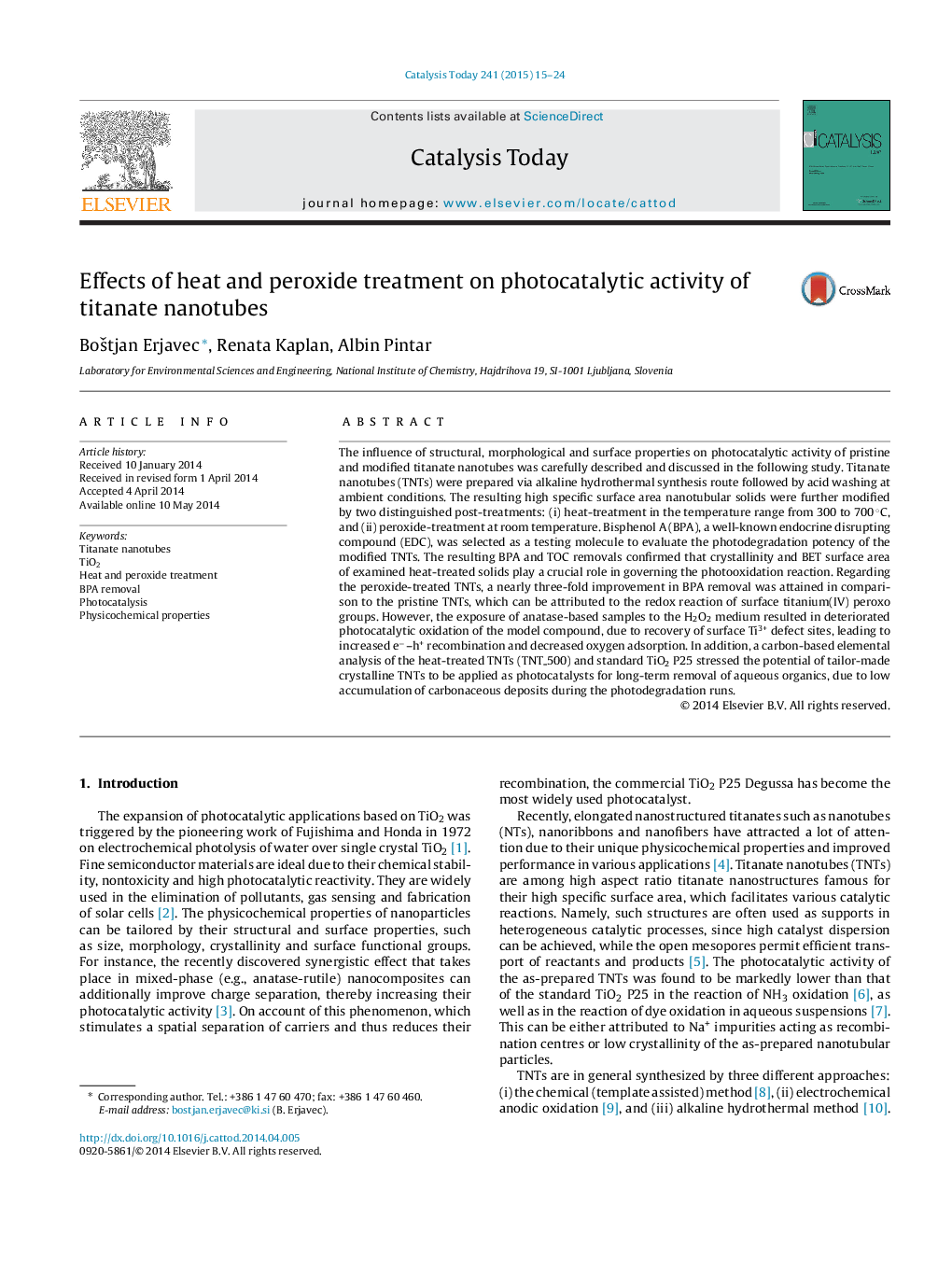| کد مقاله | کد نشریه | سال انتشار | مقاله انگلیسی | نسخه تمام متن |
|---|---|---|---|---|
| 54481 | 47011 | 2015 | 10 صفحه PDF | دانلود رایگان |
• The as-prepared titanate nanotubes were chemically and thermally post-treated.
• The sample TNT_500 possesses the optimum crystallinity to BET surface area ratio.
• Functionalized TNTs enhanced the BPA removal for nearly three times.
• Surface defects play an essential role in governing the photooxidation reaction.
• The sample TNT_500 was less prone to adsorption of organic compounds than TiO2 P25.
The influence of structural, morphological and surface properties on photocatalytic activity of pristine and modified titanate nanotubes was carefully described and discussed in the following study. Titanate nanotubes (TNTs) were prepared via alkaline hydrothermal synthesis route followed by acid washing at ambient conditions. The resulting high specific surface area nanotubular solids were further modified by two distinguished post-treatments: (i) heat-treatment in the temperature range from 300 to 700 °C, and (ii) peroxide-treatment at room temperature. Bisphenol A (BPA), a well-known endocrine disrupting compound (EDC), was selected as a testing molecule to evaluate the photodegradation potency of the modified TNTs. The resulting BPA and TOC removals confirmed that crystallinity and BET surface area of examined heat-treated solids play a crucial role in governing the photooxidation reaction. Regarding the peroxide-treated TNTs, a nearly three-fold improvement in BPA removal was attained in comparison to the pristine TNTs, which can be attributed to the redox reaction of surface titanium(IV) peroxo groups. However, the exposure of anatase-based samples to the H2O2 medium resulted in deteriorated photocatalytic oxidation of the model compound, due to recovery of surface Ti3+ defect sites, leading to increased e−–h+ recombination and decreased oxygen adsorption. In addition, a carbon-based elemental analysis of the heat-treated TNTs (TNT_500) and standard TiO2 P25 stressed the potential of tailor-made crystalline TNTs to be applied as photocatalysts for long-term removal of aqueous organics, due to low accumulation of carbonaceous deposits during the photodegradation runs.
Figure optionsDownload high-quality image (313 K)Download as PowerPoint slide
Journal: Catalysis Today - Volume 241, Part A, 1 March 2015, Pages 15–24
